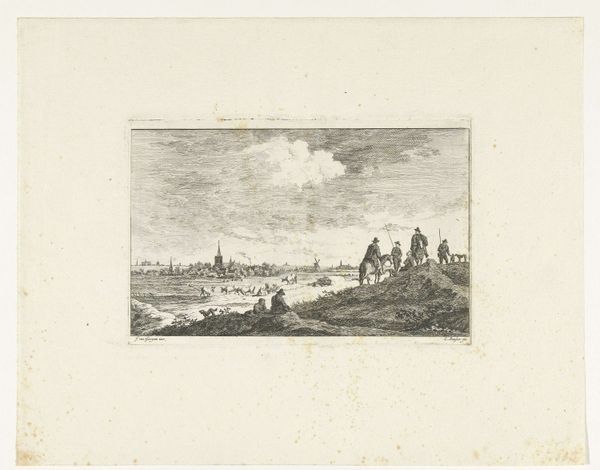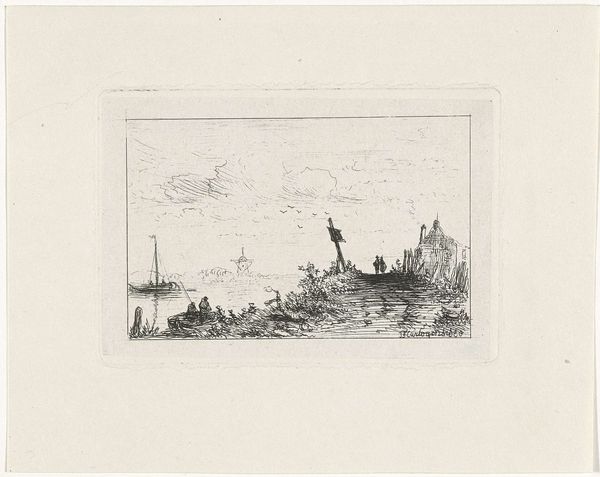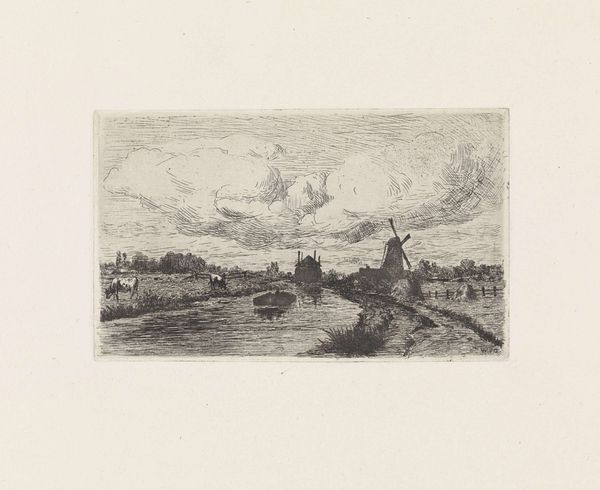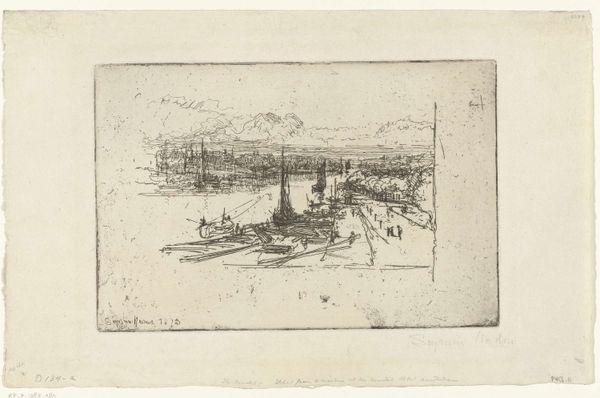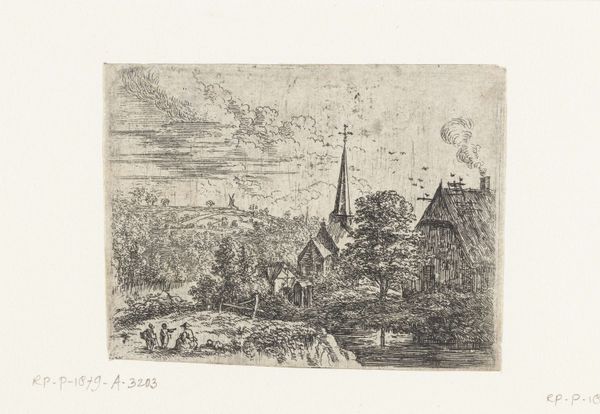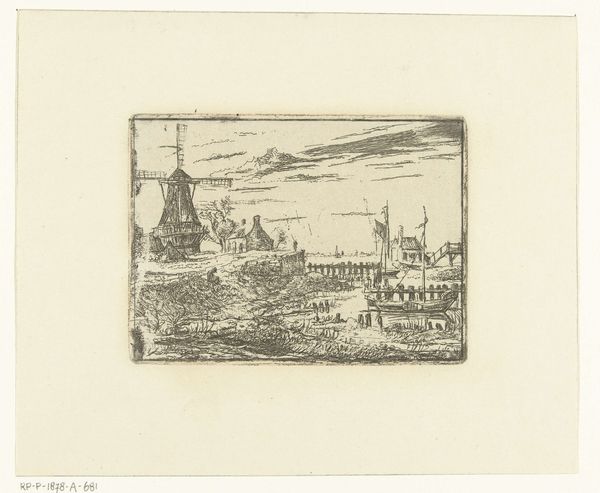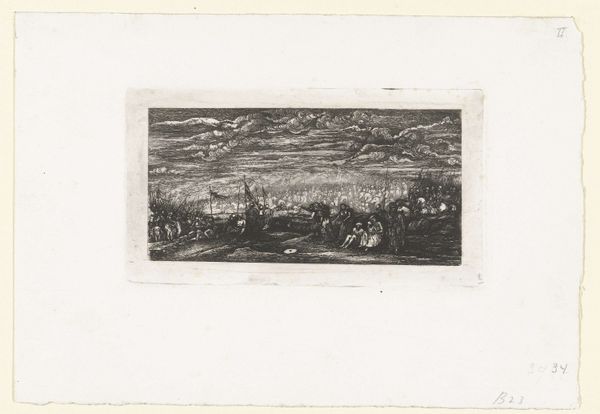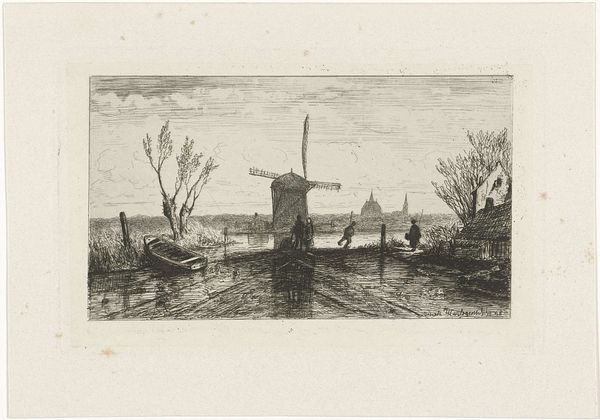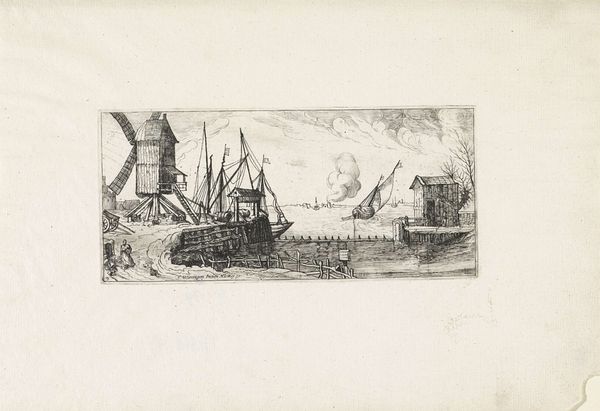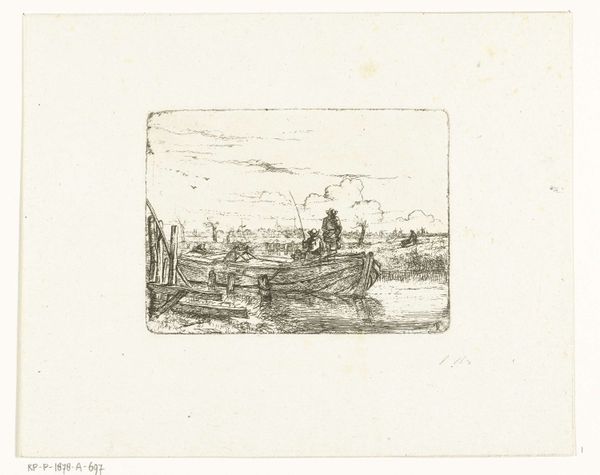
print, etching
# print
#
etching
#
landscape
#
etching
#
realism
Dimensions: height 73 mm, width 109 mm
Copyright: Rijks Museum: Open Domain
Joseph Hartogensis made this etching of a river landscape using a metal plate, likely copper or zinc, to create its intricate lines. The process involves coating the plate with a waxy, acid-resistant substance, then drawing through it with a sharp needle-like tool, exposing the metal. The plate is then immersed in acid, which bites into the exposed lines, creating grooves that hold ink. The depth of the lines, the fineness of the tool, and the length of time in the acid bath dictate the darkness and thickness of the lines, and therefore the details. When printed, the ink held in these grooves transfers onto paper, resulting in the image you see. The material qualities of the plate and the chemical action of the acid are crucial to the print’s visual impact. The fine lines suggest a deliberate and skilled hand, patiently working to capture the scene. Hartogensis had a steady hand, but also a strong knowledge of the materials and processes that underpinned his work. This knowledge, however, was often undervalued in comparison to the ‘artistic’ merit of the final image.
Comments
No comments
Be the first to comment and join the conversation on the ultimate creative platform.
